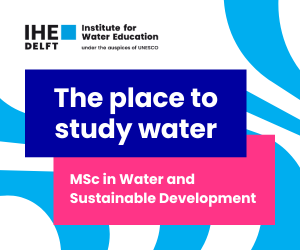Overview
Open Positions
1
Time Span
01 Oct 2026 for 4 years
Application Deadline
01 Oct 2025
Financing
yes
Type of Position
Full PhD
Working Language
English
Required Degree
Master
Areas of study
Hydraulic Engineering, Environmental Engineering, Environmental Protection Technology, Geosciences, Geoecology, Hydrology, Statistics, Geoinformatics, Engineering Informatics, Environmental Science, Sustainability Sciences (Ecological), Meteorology, Geophysics, Physical Geography
Description
Description
Water can move in two interconnected realms: the fast, visible rivers at the surface and the slower, pressure-driven flow within substrates. Today, engineers can model each realm separately, yet a reliable, open-source tool integrating a shallow-water solver and a multiphase porous-media solver within the same framework is missing. Without this coupling, it is not possible to predict how oxygen, nutrients, pollutants, or fine sediments migrate between surface water and the bed, or to quantify how restoration actions affect life-sustaining processes such as fish spawning and methane oxidation.
Decades of fieldwork at IWS have documented riverbed clogging, that is, a surplus of fine suspended sediment (e.g., downstream of dams) that settles in less steep river reaches, thus plugging gravel pores and reducing oxygen supply to benthic habitats. These measurements explain the problem, but they cannot forecast future conditions or test management scenarios. Planners are therefore forced to act first and evaluate much later. This PhD project closes this gap by:
- integrating the porous-media solver of DuMux, the IWS-developed simulator, with its new shallow-water module recently created in partnership with the German Federal Waterways Engineering and Research Institute (BAW);
- building a fully coupled model that simulates surface hydraulics and subsurface flow with relevant turbulence models and considers the transport of suspended matter (tracers);
- calibrating and validating the model against long-term data on hydraulic conductivity, water temperature, and dissolved oxygen from several rivers.
The outcome will substantiate an open-source forecasting tool that links river hydraulics to hyporheic exchange, allowing restoration actions to be evaluated prior to implementation, specifically how a proposed action alters oxygen delivery to fish embryos or the habitat of methane-oxidizing microbes. This development will also provide the basis for novel applications of existing DuMux capabilities to simulate reactive agents and biofilms, which are anticipated to play a key role in climate preparedness in water resource management.
If you want to advance computational hydraulics while tackling an urgent ecological challenge and substantiating a critical tool for water resources management, this project offers a great pathway, equipped with tools, data, and mentorship.
Research goals:
- Develop a numerical framework that couples depth-averaged shallow-water hydraulics with multiphase porous-media flow, explicitly resolving turbulence-driven exchange and suspended load transport across the surface-subsurface interface.
- Calibrate, validate and benchmark the coupling framework with data from the Inn and Isar River.
- Contribute a new open-source DuMux module to simulate oxygen delivery and clogging dynamics in rivers.
Methods to be used
- Fieldwork: participate in one survey to understand the ecosystem and measurement techniques.
- C++ coding with DuMux source code and its shallow-water module (link Darcy/Richards models with shallow water equations).
- Python coding for workflow control, data pre- and post-processing as well as model calibration and validation.
- High-performance computing (HPC) for running test cases and benchmarking.
References:
- Flemisch, Darcis, Erbertseder, Faigle, Lauser, Mosthaf, Müthing, Nuske, Tatomir, Wolff, Helmig 2011. DuMux: DUNE for multi-phase,component,scale,physics,… flow and transport in porous media. Advances in Water Resources 34, 1102–1112. https://doi.org/10.1016/j.advwatres.2011.03.007 [007-Datei]
- Dumux documentation [WWW Document], https://dumux.org/docs/doxygen/master/ (accessed May-08-2025).
- Koch, Gläser, Weishaupt, Ackermann, Beck, Becker, Burbulla, Class, Coltman, Emmert, Fetzer, Grüninger, Heck, Hommel, Kurz, Lipp, Mohammadi, Scherrer, Schneider, Seitz, Stadler, Utz, Weinhardt, Flemisch 2020. DuMuˣ 3 – an open-source simulator for solving flow and transport problems in porous media with a focus on model coupling. Computers & Mathematics with Applications. https://doi.org/10.1016/j.camwa.2020.02.012 [012-Datei]
- Negreiros, Galdos, Seitz, Noack, Schwindt, Wieprecht, Haun 2023. A multi-parameter approach to quantify riverbed clogging and vertical hyporheic connectivity. River Research and Applications 39, 1659–1666. https://doi.org/10.1002/rra.4145 [4145-Datei]
- Schwindt, Negreiros, Ponce, Schalko, Lassar, Barros, Haun 2023. Fuzzy-logic indicators for riverbed de-clogging suggest ecological benefits of large wood. Ecological Indicators 155, 111045. https://doi.org/10.1016/j.ecolind.2023.111045
- Scolari, Fadul, Schwindt 2025. Hydro-morphodynamic numerical modeling indicates risk zones for riverbed clogging. Sci Rep 15, 10873. https://doi.org/10.1038/s41598-025-95150-3
Required Documents
Required Documents
- CV
- Certificates
- Transcripts
- References
- Motivation letter
- Language certificate
